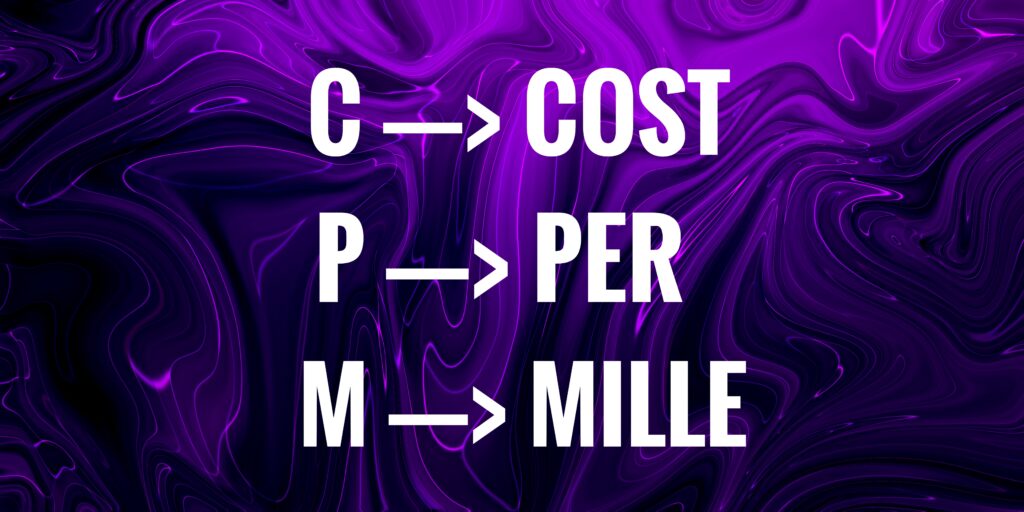CPM full form is Cost Per Mille. Marketers and advertisers continually seek effective metrics to measure the success of their campaigns. One such crucial metric is CPM (Cost Per Mille), which stands for Cost Per Mille. CPM is a widely used metric that plays a significant role in determining the cost-effectiveness of online advertising campaigns. In this article you are going to learn about CPM full form but also it’s key component, advantages and disadvantages also.

What is CPM (Cost Per Mille)
CPM is a pricing model used in digital advertising where advertisers pay for every 1,000 impressions of their ad. The term “mille” is derived from the Latin word for one thousand. Therefore, CPM represents the cost an advertiser incurs for one thousand impressions of their ad, regardless of the number of clicks or interactions.
How CPM (Cost Per Mille) Works
CPM (Cost Per Mille) is a straightforward metric that calculates the cost of reaching a thousand potential customers. Advertisers bid on ad space, and the winning bid is determined by the CPM rate. If an advertiser bids $5 CPM and their ad receives 100,000 impressions, they would pay $500 for the campaign.
Key Components of CPM (Cost Per Mille)
CPM Full form is not enough to learn about it. Lets explore its key components.
- Impressions: An impression is counted each time an ad is displayed on a user’s screen. It is the fundamental unit for measuring CPM (Cost Per Mille). Advertisers aim to maximize impressions to increase their reach.
- Cost: The cost is the amount an advertiser is willing to pay for 1,000 impressions. Advertisers set their CPM (Cost Per Mille) rates based on their budget and the perceived value of reaching a thousand users.
Advantages of CPM (Cost Per Mille)
We have learned about CPM Full Form, lets have a look on the advantages of CPM (Cost Per Mille).
- Brand Exposure: CPM is particularly beneficial for brand awareness campaigns, where the goal is to maximize exposure. Advertisers pay for impressions, making it a suitable metric for increasing brand visibility.
- Predictable Costs: With CPM, advertisers have a clear understanding of their costs per thousand impressions, providing predictability in budgeting.
- Broad Reach: CPM allows advertisers to reach a large audience, making it suitable for campaigns targeting a wide demographic.
Limitations of CPM (Cost Per Mille)
Since we have learned about advantages of CPM (Cost Per Mille), lets have a closer look on the limitations also:
- Clicks Not Guaranteed: Unlike CPC (Cost Per Click) models, CPM does not guarantee clicks or user interactions. Advertisers may pay for impressions without any direct engagement.
- Quality of Impressions: CPM (Cost Per Mille) focuses on quantity, not quality. Advertisers need to ensure that their ads are displayed to a relevant audience to maximize the effectiveness of their campaigns.
- Potential for Ad Fatigue: In CPM campaigns, users may see the same ad repeatedly, leading to ad fatigue. This can result in a decline in user engagement over time.
Conclusion
In this article we have learned about CPM full form, and not just CPM full form but also some components, benefits and limitations. CPM (Cost Per Mille) remains a vital metric in the digital advertising landscape, offering advertisers a transparent and predictable model for budgeting and assessing the reach of their campaigns. While CPM may not be suitable for all types of advertising objectives, it proves valuable for brand awareness initiatives and campaigns focused on maximizing exposure. As the digital advertising landscape continues to evolve, understanding and effectively utilizing CPM can contribute to the success of online marketing strategies.